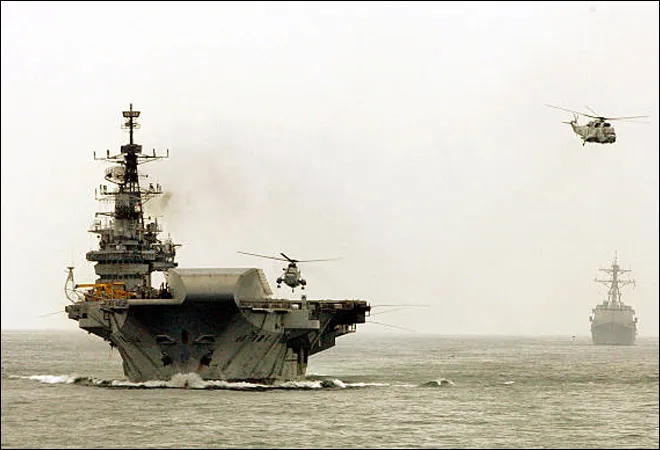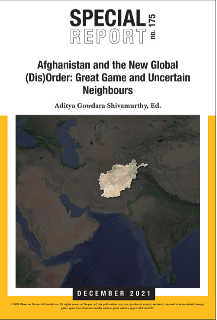
The Indian Navy has just concluded its multilateral naval exercise, ‘Milan’ in Vishakhapatnam, where for the first time, more than
40 navies from around the world, including the
US Navy participated. Convened since 1995, the exercise this year was conducted in two phases—harbour phase (25-28 February) and sea phase (1-4 March). This flagship exercise has not only enabled the navy to develop professional relationships but also has become an important tool to project India’s
soft military power.
The Milan exercise’s expanding size of participants and complexity of drills is symbolic of India’s expanding defence diplomacy imprint from West to Southeast Asia. This diplomacy includes a more advancednaval engagement, greater military exercises, and enhanced efforts for defence exports. As a result, they have improved interoperability with partner militaries, built partnerships, and earned diplomatic heft for India.
Engagement with Southeast Asia
A key driver for India’s defence diplomacy has been China’s persistent aggressiveness in the region, particularly in the South China Sea. In recent years, India has intensified collaboration with many Southeast Asian states. They, too, are keen to expand their security ties with India to balance China and bolster their maritime security.
The Milan exercise’s expanding size of participants and complexity of drills is symbolic of India’s expanding defence diplomacy imprint from West to Southeast Asia.
Significantly, most Southeast Asian states—Indonesia, Malaysia, Vietnam, Brunei, Singapore, Cambodia, Thailand, and Myanmar, participated in this year’s Milan exercise. Of these, Singapore, Thailand, and Indonesia had participated in the inaugural edition of the exercise in 1995. The Indian Navy has supported this engagement by participating in multilateral exercises in the region like the Indonesian Navy’s
Komodo and the US-led
Southeast Asia Cooperation and Training exercises. India is utilising this collaborative approach to stimulate defence exports and counter China, which has leveraged its defence supplies to entrench itself in the region.
Defence exports
The recent US $375 million Brahmos missiles deal with the Philippines—the first such export order for the missile—has come as a shot in the arm for India’s defence industry. Under the contract, India will
provide three missile batteries to the Philippine Navy and potentially a follow-up order. With a target of US
$5 billion for defence exports by 2024, India has intensified its efforts to sell weapons to Southeast Asia and Africa, where Chinese defence companies dominate. Due to such efforts, the exports have soared to INR 10,745 crores in 2018-19, from just INR 1,940.64 in 2014-15 (see table 1), although there is a long way to go.
Table 1: India’s defence exports
| Year |
Defence exports (Rs. in crores) |
| 2014-15 |
1,940.64 |
| 2015-16 |
2,059.18 |
| 2016-17 |
1,521.91 |
| 2017-18 |
4,682.36 |
| 2018-19 |
10,745.77 |
| 2019-20 |
9,115.55 |
| 2020-21 |
8,434.84 |
Source: Ministry of Defence, Lok Sabha
Besides the
measures to expand the domestic defence industrial base and boost exports, the government has strengthened the role of defence attaches located in Indian embassies abroad. The government has allocated them an
annual budget of up to US$50,000 to promote Indian defence equipment in their respective markets. Moreover, to reinforce their sales pitch, the government has
cleared multiple ‘Made-in-India’ equipment, including the Tejas combat aircraft and Astra missile for export to friendly countries.
Beyond exports, India has also helped its immediate neighbours to build their naval capability by donating and transferring equipment. This includes off-shore patrol vessels to
Mauritius (2015),
Sri Lanka (2018),
Maldives (2019), and
Seychelles (2021), as well as two Dornier aircraft to
Seychelles (2013 & 2018). Although small, with these steps, India hopes to buttress its role as a ‘net security provider’ for the region.
Humanitarian Assistance
A key element of being a ‘net security provider’ is the ability to launch Humanitarian Assistance and Disaster Relief (HADR) operations in the region. For
long, India has been leading on the HADR operations front, as seen during the 2004 Indian Ocean tsunami, 2015 Nepal earthquake, and 2020 floods in Madagascar. Moreover, the acquisition of equipment like the INS Jalashwa transport dock and C17 transport aircraft in the last decade has empowered the Indian military to execute such operations.
Moreover, as extreme weather events in the region increase the propensity for natural disasters, particularly in the Bay of Bengal region, India is coordinating with partner countries to enhance its response mechanism. HADR remains an important focus area within the Quad, but India has also undertaken initiatives like the
PANEX-21 exercise with the BIMSTEC (Bay of Bengal Initiative for Multi-Sectoral Technical and Economic Cooperation) countries to envisage contingencies for such operations in the backdrop of the pandemic.
Building relationships on India’s West
Long viewed through the prism of its relations with Pakistan, India has now crafted a distinct partnership with the West Asian monarchies. Defence diplomacy has constituted a critical part of this relationship. When the region is witnessing epochal shifts with the
Abraham Accords and a
growing profile of China, India has advanced its security cooperation by focusing on naval engagement. For instance, in August 2021, India conducted back-to-back joint naval exercises with the United Arab Emirates (
Zayed Talwar exercise), Bahrain (
Maritime Partnership Exercise), and Saudi Arabia (
Al-Mohed Al-Hindi exercise). Notably, the India-Saudi Arabia exercise was the first joint exercise between the two. Both countries have also had high-level military exchanges with respective army chiefs undertaking maiden visits—Indian Army Chief General MM Naravane in
December 2020 and Chief of Saudi Arabia Land Forces, Commander Lt. Gen. Fahd Bin Abdullah Mohammed Al Mutair in
February 2022.
HADR remains an important focus area within the Quad, but India has also undertaken initiatives like the PANEX-21 exercise with the BIMSTEC (Bay of Bengal Initiative for Multi-Sectoral Technical and Economic Cooperation) countries to envisage contingencies for such operations in the backdrop of the pandemic.
Oman has served as an important anchor for India’s military engagement in the region. Besides the regular military exchanges between the two militaries, Oman has granted the Indian Navy access to the
Duqm port for logistics and support. This has facilitated the navy’s sustained long-term presence in the western Indian Ocean, which for years has served as a hotspot for piracy. Though piracy incidents have declined lately, other challenges have emerged, like
drug trafficking and illegal fishing, that demand maritime vigilance.
Tackling Afghan challenge
Since the return of the Taliban regime in August 2021, India has been working with its partners to contain the adverse fallout of the unstable security situation in Afghanistan. The inaugural
India-Central Asia summit of January 2022 and the
Regional Security Dialogue of November 2021 underlined India’s approach towards the Afghan challenge, focusing on preventing the spread of terrorism and drug trafficking. Towards this, India is exploring holding joint counter-terrorism exercises with interested Central Asian states, which will equip their respective security forces to deal with potential terrorist violence. Meanwhile, India has also taken a sympathetic view of the 80 Afghan cadets who recently graduated from different Indian military training institutions. New Delhi has now
offered these stranded cadets a year-long training course under the Indian Technical and Economic Cooperation programme.
Conclusion
With a focus on containing the adverse regional fallout of the unfolding security situation in Afghanistan while simultaneously tackling the growing Chinese maritime assertiveness in the Indo-Pacific, India has increasingly leveraged its defence forces to shape regional diplomacy. These initiatives are helping India build a sustained cooperative engagement and create a web of partnerships throughout the region. Sustaining these partnerships will require India to invest more in its naval, expeditionary, and logistic capabilities.
The views expressed above belong to the author(s). ORF research and analyses now available on Telegram! Click here to access our curated content — blogs, longforms and interviews.



 The Indian Navy has just concluded its multilateral naval exercise, ‘Milan’ in Vishakhapatnam, where for the first time, more than
The Indian Navy has just concluded its multilateral naval exercise, ‘Milan’ in Vishakhapatnam, where for the first time, more than  PREV
PREV


